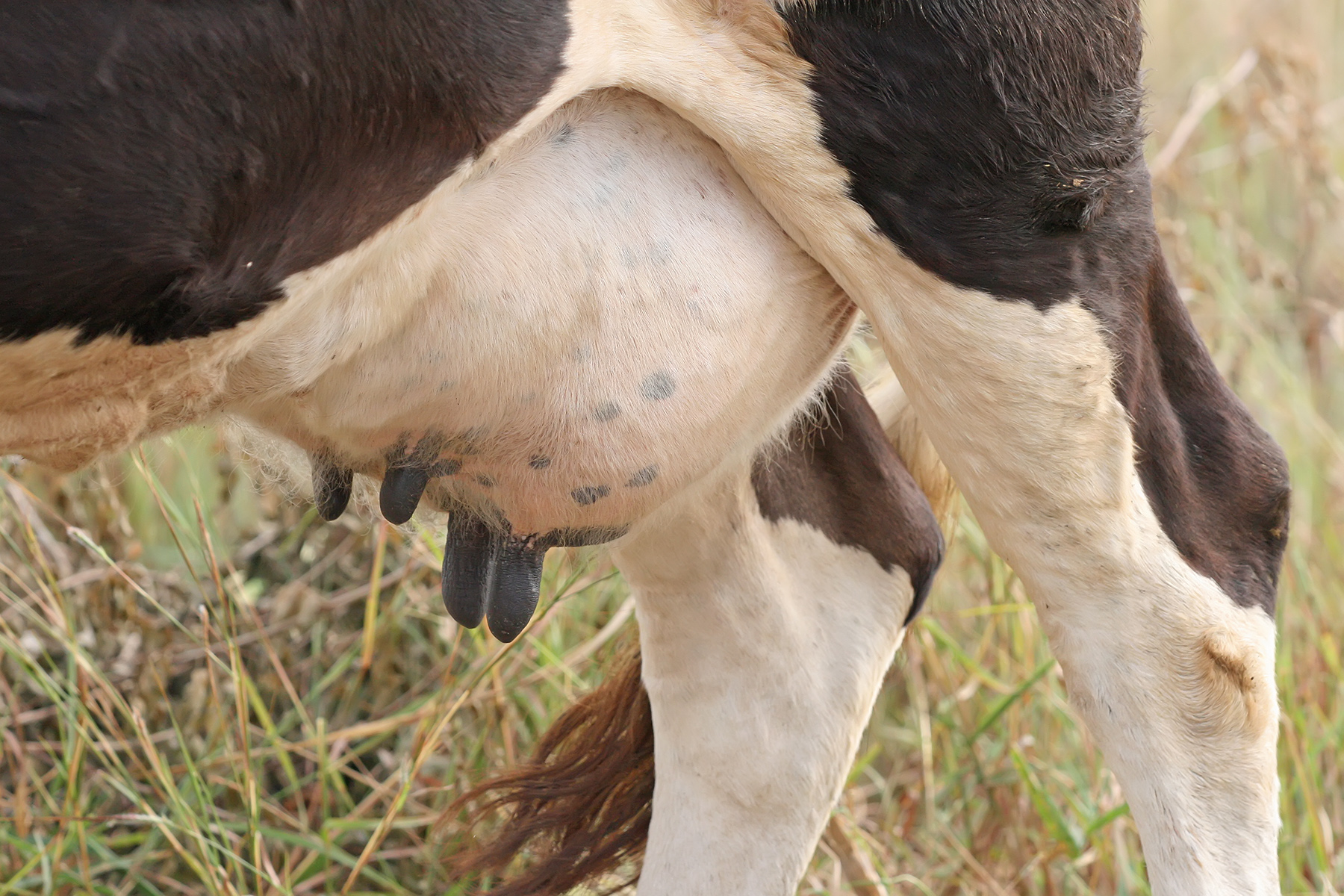
A teat is the projection from the mammary glands of mammals from which milk flows or is ejected for the purpose of feeding young. In many mammals the teat projects from the udder. The number of teats varies by mammalian species and often corresponds to the average litter size for that animal. In some cases, the teats of female animals are milked for the purpose of human consumption. The quality of some domesticated animals is determined by the establishment of desired characteristics, such as teat size and placement.
The number and positioning of mammary glands and teats varies widely among mammals. The protruding teats and accompanying glands can be located anywhere along the two milk lines. In general most mammals develop mammary glands in pairs along these lines, with a number approximating the number of young typically birthed at a time. The number of teats varies from 2 (in elephants and anthropoids) to 18 (in pigs). Marsupials usually have 4 to 12 teats,[8] but the Virginia opossum has 13, one of the few mammals with an odd number.[9][10] The following table lists the number and position of teats and glands found in a range of mammals:
| Species | Cranial Teats | Intermediate Teats | Caudal Teats | Total Teats |
| Goat, sheep, horse, guinea pig | 0 | 0 | 2 | 2 |
| Polar bear | 4 | 0 | 0 | 4 |
| American black bear, Asian black bear, grizzly bear | 4 | 0 | 2 | 6 |
| Cattle | 0 | 0 | 4 | 4 |
| Cat | 2 | 2 | 4 | 8 |
| Dog | 4 | 2 | 2 or 4 | 8 or 10 |
| Mouse | 6 | 0 | 4 | 10 |
| Rat | 6 | 2 | 4 | 12 |
| Pig | 4 | 4 | 4 | 12 |
| Elephants, anthropoids | 2 | 0 | 0 | 2 |